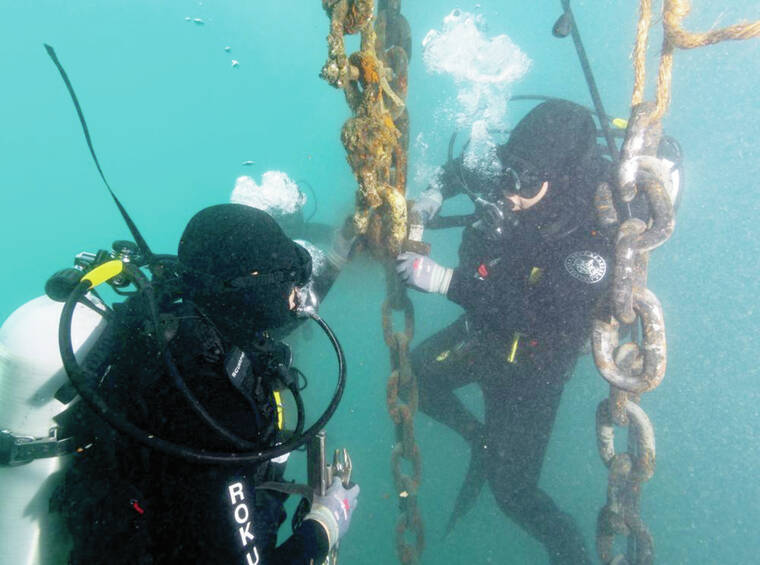PEARL HARBOR — Divers and boat operators from the U.S. Coast Guard and U.S. Army collaborated with divers from the Republic of Korea Navy and the Australian Deployable Geospatial Survey Team to practice evaluating and clearing underwater hazards following a simulated hurricane as part of Rim of the Pacific (RIMPAC) earlier this month.
The exercise stands as the first time the U.S. Coast Guard has collaborated with international partners, as well as the first RIMPAC Humanitarian Assistance and Disaster Relief exercise led by the U.S. Coast Guard.
“Building relationships improves interchangeability, which is everything when it comes to disaster relief and clearing underwater hazards. This week shows why,” said Coast Guard Chief Warrant Officer Brian Korte, the Pacific Area Dive Force Manager.
“We used an Australian sonar system deployed on a U.S. Coast Guard boat to scan the harbor, and then removed the underwater hazards they found with a team of U.S. and Republic of Korea divers. If a natural disaster were to strike anywhere in the Pacific region, there’s a real chance the teams here today would be working side by side to save lives and enable relief,” he said in a news release.
”The exercise tested several capabilities in removing underwater hazards, a critical step in disaster response because the majority of relief supplies, especially to that of island nations, are brought via ship.
A survey team from the Royal Australian Navy deployed aboard a boat from U.S. Coast Guard Maritime Safety and Security Unit Honolulu conducted an underwater survey for subsurface hazards.
Aerographers from the U.S. Navy Fleet Survey Team also deployed an autonomous unmanned underwater vehicle, the IVER 3-580, in its first application as a disaster-response platform.
Divers from the U.S. Coast Guard Pacific Dive Locker, the U.S. Army 7th Engineer Dive Unit and Republic of Korea Navy conducted a salvage dive to remove the hazard.
A decontamination team from the U.S. Coast Guard Pacific Strike Team, an environmental-hazard-response unit, showed participants how they would decontaminate divers exposed to unknown hazardous materials during a dive.
This was also the first time that an Australian survey team has deployed their equipment on a U.S. Coast Guard unit. They are part of the Maritime Geospatial Warfare Unit, a unit that supported recovery operations following the 2021 eruption of Hunga Tonga–Hunga Ha’apai on the Tongan archipelago, as well as the flooding in Brisbane, Australia earlier this year. Their survey capabilities extend from below the surface of the water to near space.
Twenty-six nations, 38 ships, four submarines, more than 170 aircraft and 25,000 personnel are participating in RIMPAC now through Aug. 4 in and around the Hawaiian Islands and Southern California. The world’s largest international maritime exercise, RIMPAC provides a unique training opportunity while fostering and sustaining cooperative relationships among participants critical to ensuring the safety of sea lanes and security on the world’s oceans.
RIMPAC 2022 is the 28th exercise in the series that began in 1971.




